How To Tell What Coat A Labradoodle Will Have
Wavy, Curly, Straight. The three types of Labradoodle coat. But how to tell what coat a Labradoodle will have?
Can you tell when they are a puppy? As a Poodle mix expert and Labradoodle owner – I have the info you need.
Labradoodles, a crossbreed between the Poodle and the Labrador Retriever, are an absolute joy to have around. They are charming, loving, kind, playful, and every bit as naughty who love interacting and playing around with their humans. You simply won’t be in an angry or upset mood if you have them around.
One of the major appeals of Labradoodles, apart from their temperament, is their unique looks. Especially their coats. Labradoodles’ coats are a sight to behold and they come in a variety of textures and colors.
In this article, we will take a look at the different types of coats a Labradoodle puppy can have and the different Labradoodle coat stages of a pup right up until they grow into an adult dog. So, here’s everything you need to know about Labradoodle coats.
Labradoodles Coats
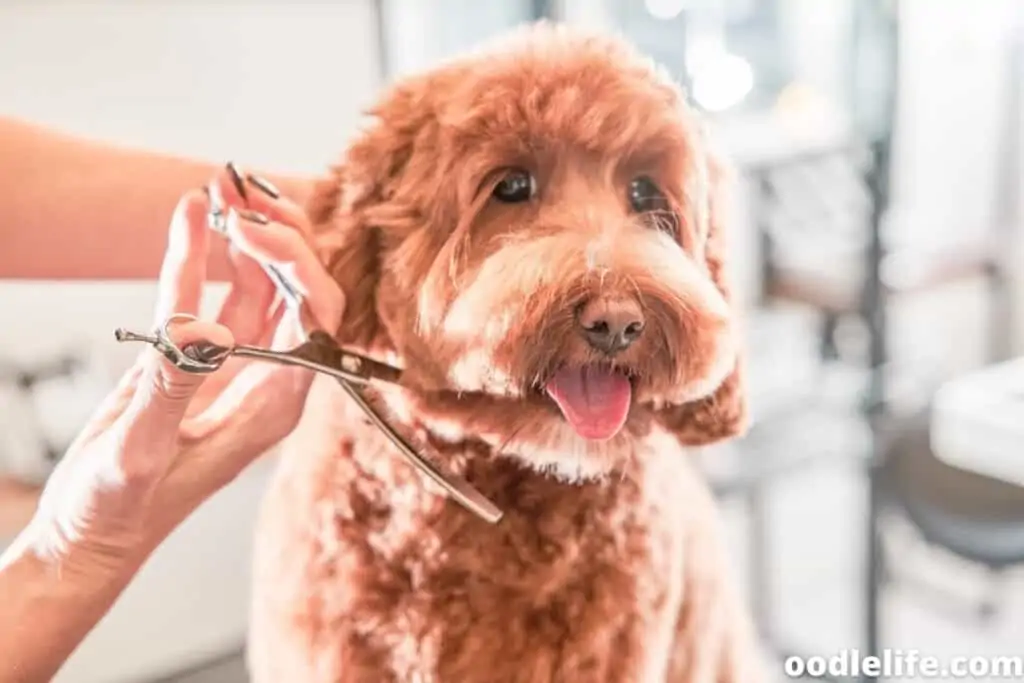
Apart from the classic solid black, caramel, and white colors, Labradoodles are also available in other wonderful colors like peach, apricot, chocolate, red, chocolate brindle, and so on. So if you’re looking to purchase a Labradoodle pup, there are many options for you to choose from.
Apart from the unique colors, there are also different types of Labradoodle coats that you can opt for. Learning about these different coat types will not only help you reach a decision as to what type of coat you would like your Labradoodle to have but also help you learn how to care for it and what to expect as your pup grows.
Did you know a Labradoodle’s coat can change in type and color as they grow? So, pet owners should expect a pleasant surprise as their dog ages.
A Labradoodle pup comes in different coats and each coat has a range of patterns, almost like a customized version of your dog’s appearance.
Types Of Labradoodle Coat
Labradoodles sure know how to stand out from the rest, thanks to their eye-catching coats! In fact, this breed of dog is popular among dog lovers especially for their coats as they are one of the very few breeds whose fur does not give out any odor.
There are three main types of coats that Labradoodles can have. While all three are uniquely special in their own way, the shedding for each type of coat also varies and each coat thus has its own grooming needs.
#1. Hair Coated Labradoodles (Straight Coat Labradoodle)
Of the three types of coats, the straight or hair coated Labradoodle is the least popular owing to the fact that it sheds the most out of the three types and is thus not completely allergy-friendly. It also carries a slight odor.
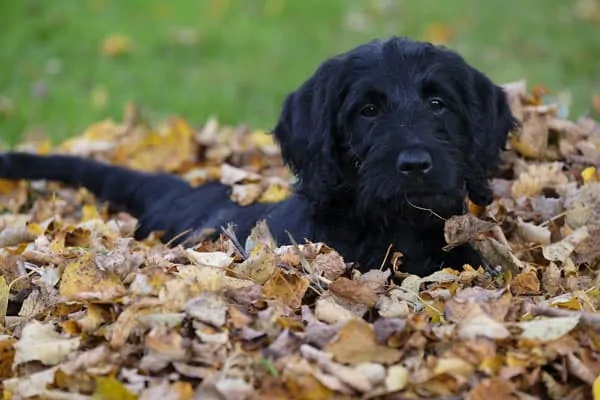
Its straight hair is inherited from the Labrador parent and is significantly different in appearance from the fleece and wool coated Labradoodles.
Labradoodles are not born with their teddy bear-like appearance. In fact, their coat begins to grow only after the pup reaches 12 weeks of age. The straight hair coat is commonly visible in the first generation Labradoodle litter that is bred by the pairing of a Poodle with a Labrador Retriever. The muzzle area is usually hair coated and will determine their coat type.
The hair coated type of breed is scruffy, coarse, and wiry to touch. And the good news is this type of coat is very easy to maintain. The straight coat also means that it can vary in length and thickness, so you may have to take your dog to the grooming salon more often than you may imagine. It is also possible to control the shedding by ensuring that your dog is regularly clipped and groomed.
If you don’t mind the shedding, Labradoodles with this type of coat may be a good choice. However, if you or anyone in your family has dog allergies, hair coated Labradoodles are a complete no-no. Although for someone with a general allergy, they may be able to tolerate it.
#2. Wool Coated Labradoodles (Curly Coat Labradoodle)
The second most favored type of coat of this breed, the wool coated Labradoodle has dense and thick fur. It’ll make you wonder whether you’ve got yourself a Labradoodle puppy or a small sheep for a pet.
This coat of a Labradoodle is so soft, you might just find yourself touching their soft wool all the time. People have often claimed that they aren’t able to keep their hands off wool coated Labradoodles!
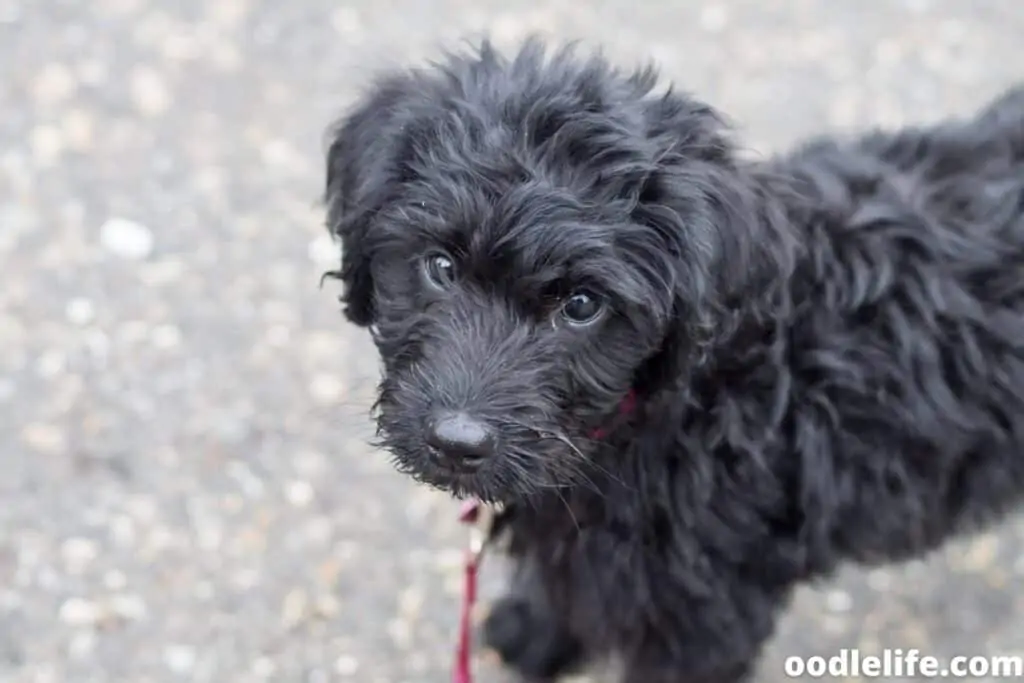
Often referred to as the “curly” kind, they are identified based on touch rather than by simply observing them. The wool coat is also sometimes a tad bit coarser to the touch with a tight-knit curl pattern, very much similar to their parent Poodle’s coat.
When it comes to shedding, you have nothing to worry about with this type of coat. This is a non-shedding coat so people with allergies can rest easy with these doodles. However, a visit to the grooming salon cannot be completely avoided. It is important that you take your pet Labradoodle once every six weeks for regular clipping and grooming in order to maintain their healthy coat.
#3. Fleece Coated Labradoodles (Wavy Coat Labradoodles)
Last but not the least, the fleece coated, commonly called “shaggy,” Labradoodles are the most preferred of this breed. It is simply because this one is the easiest to maintain compared to the wool coated and the hair coated ones.
My Labradoodle max has a apricot wavy coat.
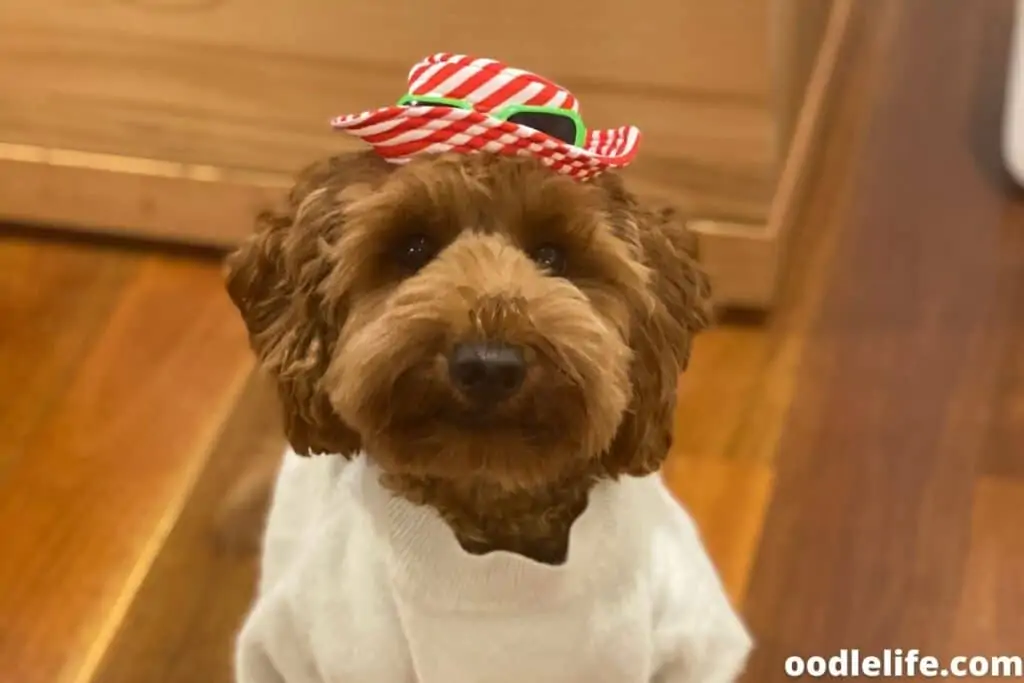
Of the three types of coats of Labradoodles, the fleece coat is hypoallergenic in nature, which means this breed is relatively unlikely to cause any allergic reaction. The fleece-coated Labradoodle comes in three varieties — straight, loose curls, and very curly.
The fleece coat Labradoodles has a soft feel to it and is overall wavy. And if they do shed, it is minimal. The minimal shedding also means that you can brush their coats once every week.
This kind of coat also requires maintenance, so make sure you take your Labradoodle for clipping and grooming several times a year depending on its growth.
How To Tell What Type Of Coat A Labradoodle Will Have
Before you start predicting how your doodle pup may look, you may want to meet its parents. It will give you a better idea about the type of coat your pup might grow into.
A commonly used method to predict your Labradoodle’s coat is to check the fur around its face and muzzle. For example, if the muzzle fur on your pup shows signs of crimps or waves, it will most likely develop a shaggy or woolly coat. But you can’t be too sure until your puppy is much older. This is because a straight haired coat may eventually transform into curls or waves during the later stages of your puppy’s growth.
However, in the case of the fleece haired coat, you will be able to determine the coat by the time your doodle pup is around five weeks old. You need to check the fur between your Labradoodle’s eyes. If it appears to be curling, then you can be almost certain that your pup will have a fleece haired coat.
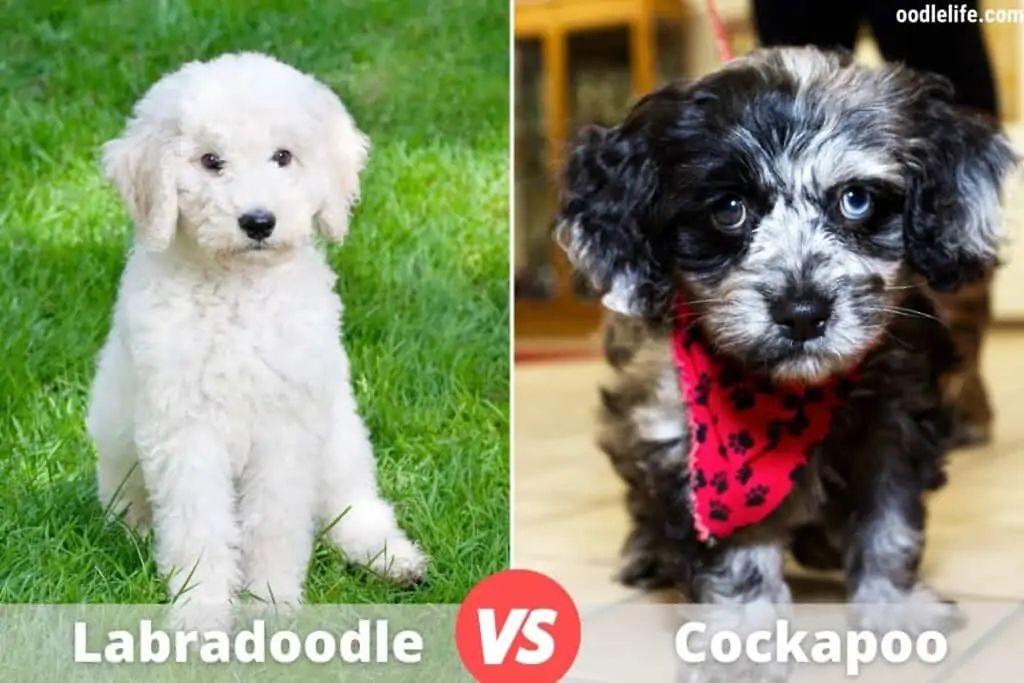
Genetics
We can make our guesses and wish and hope, but at the end of the day, it all comes down to genetics.
The Cu locus is that part of your dog’s DNA in the KRT71 gene that determines the hair type. As the curly coat is a recessive trait, the eventual coat of your Labradoodle will depend on which one of the following genotypes your dog has:
1. CuC/CuC
When a dog has two CuC alleles, it means your dog has the curly coat gene. It also essentially guarantees that your dog will pass down the CuC to its offspring.
2. Cu/CuC
This genotype suggests that your dog has one curly coat gene and one straight coat gene, so it may develop a curly or wavy coat. Having one CuC and Cu allele also indicates there is a 50% chance your dog will pass on the or Cuor CuC allele to its offspring.
3. Cu/Cu
Having two Cu alleles means your dog will develop a straight coat and will also 100% pass on the Cu allele to its offspring.
The Cu locus test is a DNA test that will tell you whether your pup will develop a straight, wool, or fleece coat. However, most experienced breeders also have extensive knowledge of genetics, so you can also rely on them to make an educated guess by tracing your pup’s breeding line.
Labradoodle Coat Stages
Generally, Labradoodle puppies start shedding their puppy coat by the time they reach six to twelve months of age. However, this varies depending on the type of coat your Labradoodle puppy has.
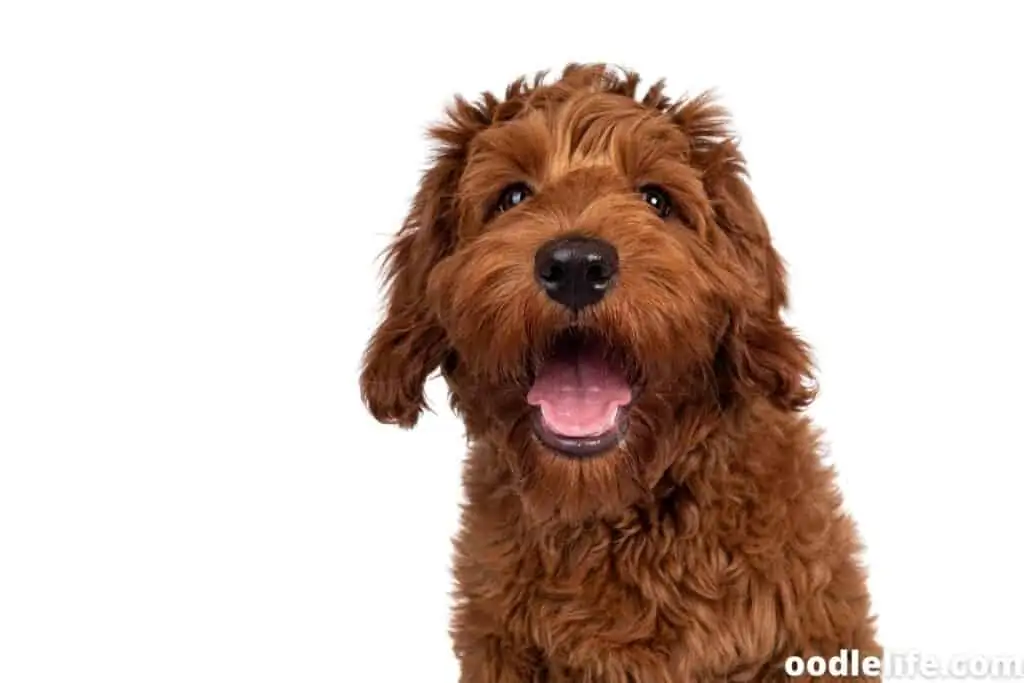
We’ve talked about your Labradoodle having straight fur around its muzzle and then developing a curly coat. So you must be wondering whether Labradoodle pups’ coats change throughout their life. Well, almost every Labradoodle puppy undergoes a coat change. And as the puppy coat begins to shed or get replaced by an adult coat, the need for grooming also increases.
A Labradoodle puppy coat is finer and softer to touch than the adult coat. And an adult doodle’s coat can develop to be anything from straight hair to wool to fleece type. The new adult coat is usually thicker and smoother than the puppy coat.
As to when your puppy will start shedding, it usually begins at the six-month mark. But usually, your pup will start to shed anytime between six to nine months of age. Losing all their puppy coats and developing an adult one is a slow and gradual process. The coat doesn’t shed all at once. It typically takes up to a year, sometimes a year and a half.
Once your puppy’s coat starts shedding, you will need to brush your Labradoodle puppy regularly. This is very important or else the fur will knot up with the new growth of the adult coat and will cause mats, which will only aggravate your pup.
A dog’s generation is a crucial factor and has a huge impact on the mannerisms and characteristics of the Labradoodle, including its coat. This is why most breeders mix and match one generation with another to bring about certain qualities.
Grooming Your Labradoodle
Grooming your Labradoodle can be time-consuming and often tiresome, but it is also very necessary.
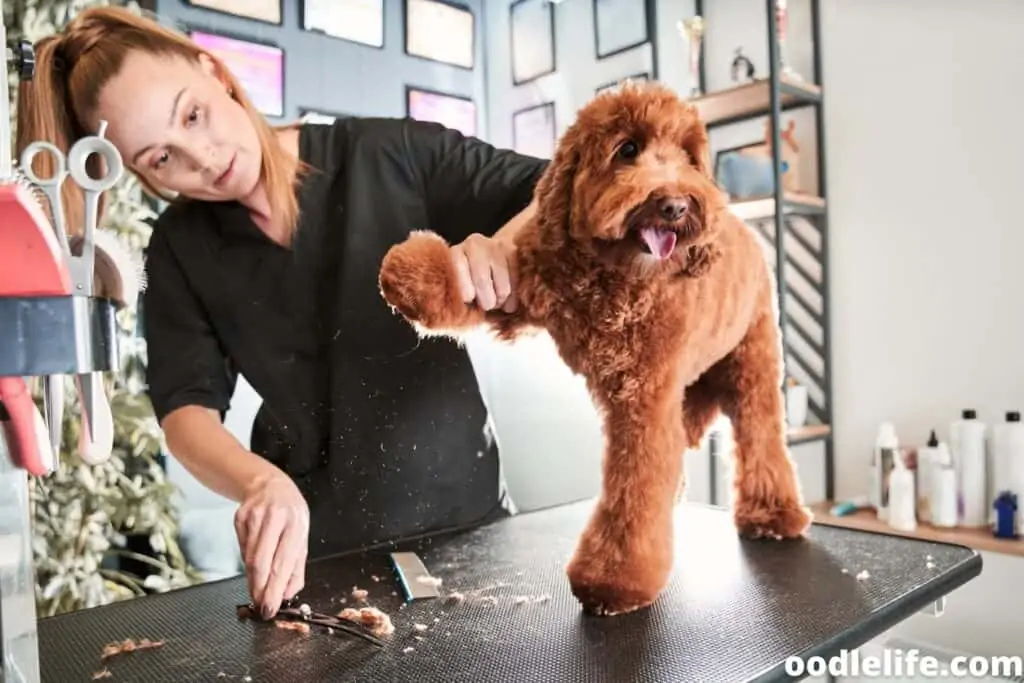
Depending on the type of Labradoodle and their coat, you should ideally be brushing your dog at least once a week to avoid matting. The amount of brushing also depends on the activities the dog engages in on an everyday basis.
Grooming Tools Every Labradoodle Owner Should Have
1. Comb
A simple stainless steel or a wooden comb should do the job. Make sure it has wider teeth on one end and finer on the other.
2. Brush
You need to choose a brush wisely by taking into consideration the coat of your Labradoodle puppy so that the bristles can go deep into its coat. Fleece coated pups are the easiest to brush. Bristle brushes are perfect for hair-coated and wool-coated Labradoodles, whereas slicker brushes are great for de-shedding and getting to the lower layers of your doodle’s hair.
3. Detangler
A detangler is used to de-knot the coat of your Labradoodle, and it is very gentle so it does its job without hurting your pet or causing them any distress. It works great along with a comb or a de-matting comb as it helps loosen the tangles and mats. If you do not have time to make a trip to the grooming salon, a detangler can sort you out for the moment.
4. De-Matting Comb
When you own a Labradoodle, tangles and mats are bound to happen more frequently if you do not brush your dog very often. If you keep putting off brushing them, a comb or brush will no longer do the trick. That is when a de-matting comb will come to the rescue.
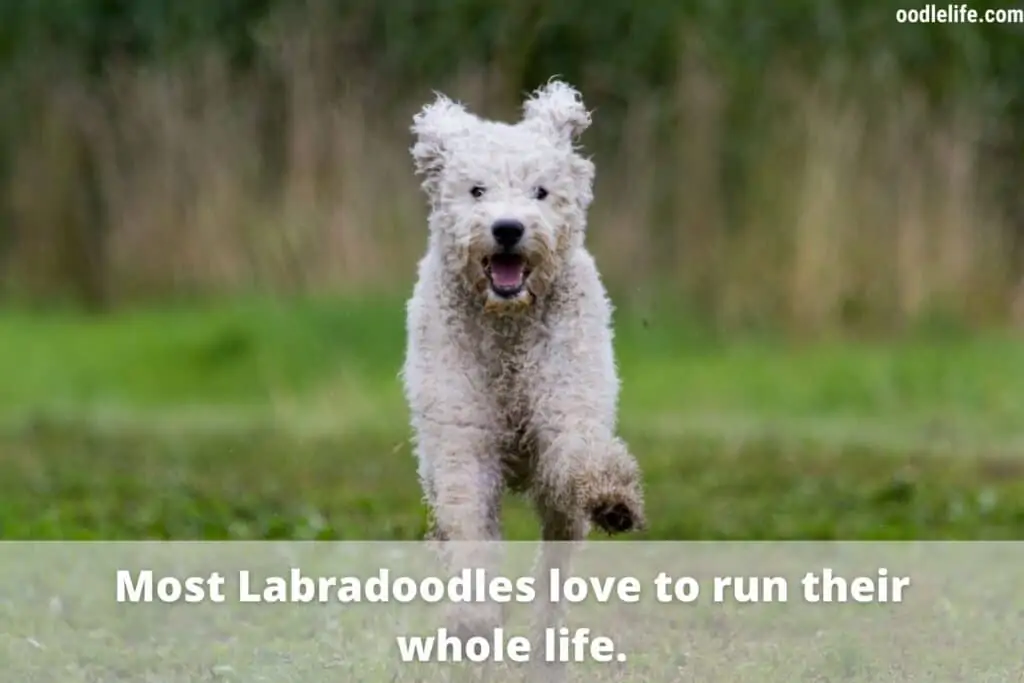
Conclusion
The Labradoodle breed is taking over the world in the popularity contest, making it one of the most sought-after breeds to own across the US. Its charming looks combined with its low-shedding fur make it even more desirable.
Now that you have all the information you may need about your Labradoodle’s coat type and how to look after it, you can go ahead and make the right pick to give an adorable pup a forever home.